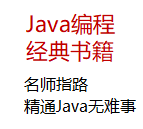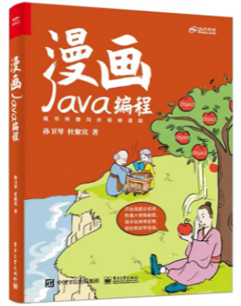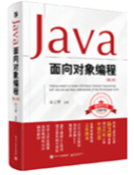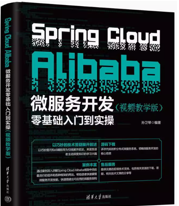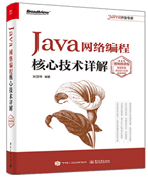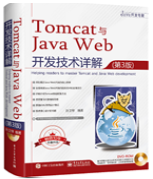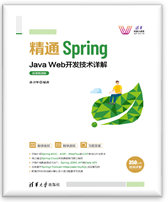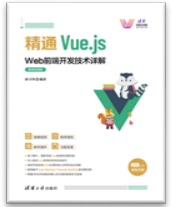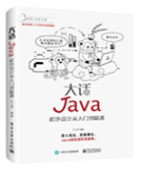|
|
今天来简单地聊聊事件驱动,其实写这篇文章挺令我挺苦恼的,因为事件驱动这个名词,我没有找到很好的定性解释,担心自己的表述有误,而说到事件驱动可能立刻联想到如此众多的概念:观察者模式,发布订阅模式,消息队列MQ,消息驱动,事件,EventSourcing…为了不产生歧义,笔者把自己所了解的这些模棱两可的概念都列了出来,再开始今天的分享。
在设计模式中,观察者模式可以算得上是一个非常经典的行为型设计模式,猫叫了,主人醒了,老鼠跑了,这一经典的例子,是事件驱动模型在设计层面的体现。
另一模式,发布订阅模式往往被人们等同于观察者模式,但我的理解是两者唯一区别,是发布订阅模式需要有一个调度中心,而观察者模式不需要,例如观察者的列表可以直接由被观察者维护。不过两者即使被混用,互相替代,通常不影响表达。
MQ,中间件级别的消息队列(e.g. ActiveMQ,RabbitMQ),可以认为是发布订阅模式的一个具体体现。事件驱动->发布订阅->MQ,从抽象到具体。
java和spring中都拥有Event的抽象,分别代表了语言级别和三方框架级别对事件的支持。
EventSourcing这个概念就要关联到领域驱动设计,DDD对事件驱动也是非常地青睐,领域对象的状态完全是由事件驱动来控制,由其衍生出了CQRS架构,具体实现框架有AxonFramework。
Nginx可以作为高性能的应用服务器(e.g. openResty),以及Nodejs事件驱动的特性,这些也是都是事件驱动的体现。
本文涵盖的内容主要是前面4点。
Spring对Event的支持
Spring的文档对Event的支持翻译之后描述如下:
ApplicationContext通过ApplicationEvent类和ApplicationListener接口进行事件处理。 如果将实现ApplicationListener接口的bean注入到上下文中,则每次使用ApplicationContext发布ApplicationEvent时,都会通知该bean。 本质上,这是标准的观察者设计模式。
而在spring4.2之后,提供了注解式的支持,我们可以使用任意的java对象配合注解达到同样的效果,首先来看看不适用注解如何在Spring中使用事件驱动机制。
定义业务需求:用户注册后,系统需要给用户发送邮件告知用户注册成功,需要给用户初始化积分;隐含的设计需求,用户注册后,后续需求可能会添加其他操作,如再发送一条短信等等,希望程序具有扩展性,以及符合开闭原则。
如果不使用事件驱动,代码可能会像这样子:
public class UserService {
@Autowired
EmailService emailService;
@Autowired
ScoreService scoreService;
@Autowired
OtherService otherService;
public void register(String name) {
System.out.println("用户:" + name + " 已注册!");
emailService.sendEmail(name);
scoreService.initScore(name);
otherService.execute(name);
}
}
要说有什么毛病,其实也不算有,因为可能大多数人在开发中都会这么写,喜欢写同步代码。但这么写,实际上并不是特别的符合隐含的设计需求,假设增加更多的注册项service,我们需要修改register的方法,并且让UserService注入对应的Service。而实际上,register并不关心这些“额外”的操作,如何将这些多余的代码抽取出去呢?便可以使用Spring提供的Event机制。
定义用户注册事件
public class UserRegisterEvent extends ApplicationEvent{
public UserRegisterEvent(String name) { //name即source
super(name);
}
}
ApplicationEvent是由Spring提供的所有Event类的基类,为了简单起见,注册事件只传递了name(可以复杂的对象,但注意要了解清楚序列化机制)。
定义用户注册服务(事件发布者)
@Service // <1>
public class UserService implements ApplicationEventPublisherAware { // <2>
public void register(String name) {
System.out.println("用户:" + name + " 已注册!");
applicationEventPublisher.publishEvent(new UserRegisterEvent(name));// <3>
}
private ApplicationEventPublisher applicationEventPublisher; // <2>
@Override
public void setApplicationEventPublisher(ApplicationEventPublisher applicationEventPublisher) { // <2>
this.applicationEventPublisher = applicationEventPublisher;
}
}
<1> 服务必须交给Spring容器托管
<2> ApplicationEventPublisherAware是由Spring提供的用于为Service注入ApplicationEventPublisher事件发布器的接口,使用这个接口,我们自己的Service就拥有了发布事件的能力。
<3> 用户注册后,不再是显示调用其他的业务Service,而是发布一个用户注册事件。
定义邮件服务,积分服务,其他服务(事件订阅者)
@Service // <1>
public class EmailService implements ApplicationListener<UserRegisterEvent> { // <2>
@Override
public void onApplicationEvent(UserRegisterEvent userRegisterEvent) {
System.out.println("邮件服务接到通知,给 " + userRegisterEvent.getSource() + " 发送邮件...");// <3>
}
}
<1> 事件订阅者的服务同样需要托管于Spring容器
<2> ApplicationListener<E extends ApplicationEvent>接口是由Spring提供的事件订阅者必须实现的接口,我们一般把该Service关心的事件类型作为泛型传入。
<3> 处理事件,通过event.getSource()即可拿到事件的具体内容,在本例中便是用户的姓名。
其他两个Service,也同样编写,实际的业务操作仅仅是打印一句内容即可,篇幅限制,这里省略。
编写启动类
@SpringBootApplication
@RestController
public class EventDemoApp {
public static void main(String[] args) {
SpringApplication.run(EventDemoApp.class, args);
}
@Autowired
UserService userService;
@RequestMapping("/register")
public String register(){
userService.register("kirito");
return "success";
}
}
当我们调用userService.register(“kirito”);方法时,控制台打印信息如下:

他们的顺序是无序的,如果需要控制顺序,需要重写order接口,这点不做介绍。其次,我们完成了用户注册和其他服务的解耦,这也是事件驱动的最大特性之一,如果需要在用户注册时完成其他操作,只需要再添加相应的事件订阅者即可。
Spring 对Event的注解支持
上述的几个接口已经非常清爽了,如果习惯使用注解,Spring也提供了,不再需要显示实现
注解式的事件发布者
@Service
public class UserService {
public void register(String name) {
System.out.println("用户:" + name + " 已注册!");
applicationEventPublisher.publishEvent(new UserRegisterEvent(name));
}
@Autowired
private ApplicationEventPublisher applicationEventPublisher;
}
Spring4.2之后,ApplicationEventPublisher自动被注入到容器中,采用Autowired即可获取。
注解式的事件订阅者
@Service
public class EmailService {
@EventListener
public void listenUserRegisterEvent(UserRegisterEvent userRegisterEvent) {
System.out.println("邮件服务接到通知,给 " + userRegisterEvent.getSource() + " 发送邮件...");
}
}
@EventListener注解完成了ApplicationListener<E extends ApplicationEvent>接口的使命。
更多的特性可以参考SpringFramework的文档。
Spring中事件的应用
在以往阅读Spring源码的经验中,接触了不少使用事件的地方,大概列了以下几个,加深以下印象:
Spring Security中使用AuthenticationEventPublisher处理用户认证成功,认证失败的消息处理。
public interface AuthenticationEventPublisher {
void publishAuthenticationSuccess(Authentication authentication);
void publishAuthenticationFailure(AuthenticationException exception,
Authentication authentication);
}
Hibernate中持久化对象属性的修改是如何被框架得知的?正是采用了一系列持久化相关的事件,如DefaultSaveEventListener,DefaultUpdateEventListener,事件非常多,有兴趣可以去org.hibernate.event包下查看。
Spring Cloud Zuul中刷新路由信息使用到的ZuulRefreshListener
private static class ZuulRefreshListener implements ApplicationListener<ApplicationEvent> {
...
public void onApplicationEvent(ApplicationEvent event) {
if(!(event instanceof ContextRefreshedEvent) && !(event instanceof RefreshScopeRefreshedEvent) && !(event instanceof RoutesRefreshedEvent)) {
if(event instanceof HeartbeatEvent && this.heartbeatMonitor.update(((HeartbeatEvent)event).getValue())) {
this.zuulHandlerMapping.setDirty(true);
}
} else {
this.zuulHandlerMapping.setDirty(true);
}
}
}
Spring容器生命周期相关的一些默认Event
ContextRefreshedEvent,ContextStartedEvent,ContextStoppedEvent,ContextClosedEvent,RequestHandledEvent
。。。其实吧,非常多。。。
总结
本文暂时只介绍了Spring中的一些简单的事件驱动机制,相信如果之后再看到Event,Publisher,EventListener一类的单词后缀时,也能立刻和事件机制联系上了。再阅读Spring源码时,如果发现出现了某个Event,但由于不是同步调用,所以很容易被忽视,我一般习惯下意识的去寻找有没有提供默认的Listener,这样不至于漏掉一些“隐藏”的特性。下一篇文章打算聊一聊分布式场景下,事件驱动使用的注意点。
原文出处: 徐靖峰 https://www.cnkirito.moe/2017/09/10/event-1/
程序猿的技术大观园:www.javathinker.net
|
|

